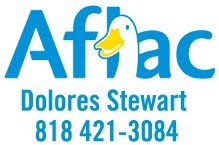Dazed by the Health Care Merry-Go-Round? Clear Your Head with Six Key Voluntary Policies
When it comes to health insurance, Americans’ heads are spinning. Employers, workers and even some benefits experts are dizzy from the merry-go-round of changes to the way health care benefits are purchased, delivered and paid for.
One thing that won’t change anytime soon is the effort businesses are making to reduce employer-paid health care costs. For the past several years, budget-conscious companies have looked for ways to control their benefits-related spending, not only by eliminating some employer-paid coverage but also by shifting costs to workers in the form of increased co-payments and deductibles.
While employers look for ways to trim benefits costs, workers are searching for ways to help guard against the fiscal implosion that can accompany injury or illness. One way many businesses are soothing worker fears is by supplementing their benefits packages with an array of employee-paid voluntary health insurance options.
Employees Want Voluntary Options
Voluntary insurance allows workers to make their own decisions about what types of supplementary coverage they need and can afford. The 2013 Aflac WorkForces Report revealed that 60 percent of employees would be interested in purchasing voluntary benefits if those benefits were made available by their companies.1
So, once a company has made the decision to add voluntary benefits to its roster of health insurance choices, where does it start?
One way is by surveying employees to identify their most-desired voluntary options and offering a selection of the plans generating the most interest. Overwhelming employees with too many choices at once can be just as ineffective as not providing enough options to choose from. Most employers will find that workers are most interested in these six types of voluntary coverage:
- Disability insurance, which protects a worker’s most valuable asset – the ability to earn a living. Disability benefits pay a portion of an employee’s income while he or she is disabled and unable to work.
- Life insurance is a high-demand benefit, especially in shaky financial times. It’s most appealing to workers who want to protect their families’ lifestyles if the worst should happen. Benefits can be used to pay immediate needs such as funeral expenses, medical costs and current bills and debts. They can also be used to pay future needs, including ongoing financial obligations, education costs and retirement expenses.
- Dental coverage is a high-value proposition for several reasons: It’s often inexpensive, dental health is closely tied to overall health, and many companies are discontinuing employer-paid dental coverage. Supplementary dental plans can help pay for cleanings, checkups, filling cavities, X-rays, sealants, emergency care and more.
- Accident insurance allows workers to stay ahead of the out-of-pocket expenses that add up quickly after an unexpected health event. Benefits can be used to pay for emergency treatment, hospital stays and medical exams, as well as for treatment-related transportation and lodging needs.
- Critical care and recovery insurance helps pay for treatment related to serious, life-altering events such as heart attacks, strokes, kidney failure or third-degree burns.
By adding voluntary options to workers’ benefits plans, employers can develop robust health insurance portfolios that provide workers with peace of mind at no direct cost to their companies’ bottom lines. What’s more, Aflac’s research shows that a well-thought-out roster of health insurance options results in increased contentment among existing employees while attracting new talent.
Strong Benefits Programs Linked to Employee Retention, Satisfaction
According to the 2013 Aflac WorkForces Report findings, 60 percent of employees whose companies offer voluntary benefits say they’re not likely to look for new jobs within the next year, compared to 49 percent of those who are not offered voluntary options. Workers with voluntary benefits also gave their employers higher marks on job-satisfaction indicators: They are more likely to believe their companies are known as great places to work and that their employers take care of workers, and they’re also more likely to recommend their workplaces to friends.
The bottom line? Employers can help workers step off the merry-go-round of today’s volatile U.S. health care system – and ease their health care-related financial worries – by presenting them with voluntary benefits options. Voluntary health insurance benefits allow employees greater control over their finances by giving them the chance to select the amounts and types of coverage that meet their health care needs, as well as their families’ budgets.
Sources
1 The Aflac WorkForces Report, www.aflacworkforcesreport.com – accessed July 12, 2013





